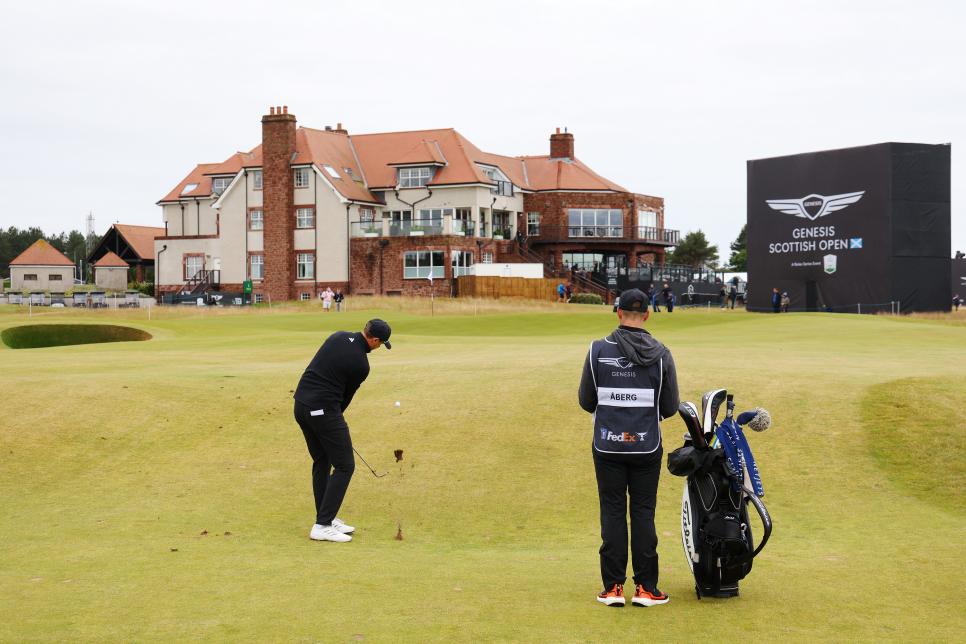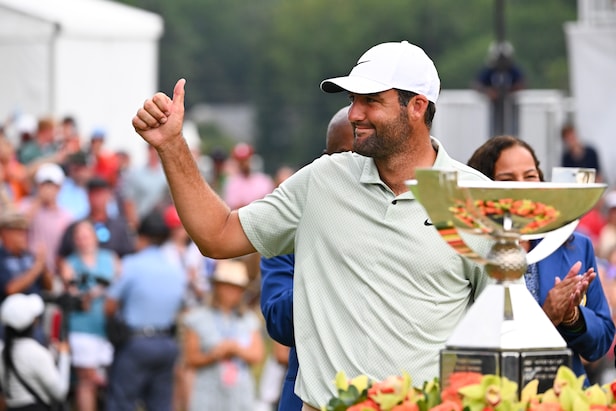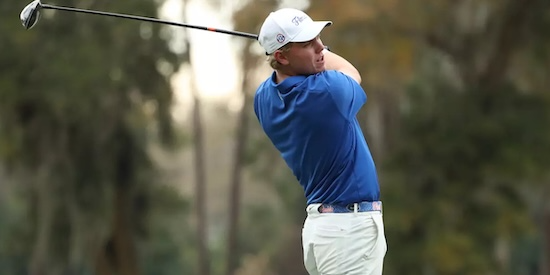This image shows the secret ‘must-do’ move for crispier, spinnier wedge shots. Can you spot it? – Australian Golf Digest

- by Admin
- July 12, 2024

If you watch enough professional golf, you see it over and over again: the low launching, high-spinning wedge shot that takes a few hops, checks and rolls gently to the hole. It’s a popular shot on tour, especially in links golf, where the firm fairways, high winds and large greens often mean the best play is the low, driving wedge shot.
It’s one of those shots we marvel at but struggle to pull off at home. Poor contact prevents us from getting enough spin, and the result is a shot that we have no control over. Sometimes it spins, sometimes it rolls out, sometimes it’s high, sometimes it’s low.
MORE: This indoor drill created one of the best swings in golf—Ludvig Aberg explains how
Then there is this image (below) of Ludvig Aberg at the Scottish Open, hitting a short wedge shot. It turns out, what you see (and don’t) in this one picture explains how tour pros are able to hit low, spinny wedge shots every time.
Andrew Redington
To help us break it down, we caught up with Golf Digest’s top-ranked teacher in New Jersey and director of instruction at Alpine Country Club, Jonathan Yarwood.
The ‘must-do’ move
Notice in the above image, taken just after impact, you can’t see Aberg’s hands, but the club is still in front of him. This is because he is rotating his body hard to the left through impact.
“If you want to munch your wedges out there with a low flight and high spin, a ‘must-do’ move is to rotate the torso and move the handle left,” Yarwood says.
MORE: ‘So many amateurs make this mistake’—British Open winner shares his crispy-contact feel
Often, amateurs struggle with these shots because they stall their body rotation and use only their hands and arms to hit the ball. Essentially, they’re hitting at the ball instead of through the ball. This issue only gets worse under pressure, when the body seizes up even more. This creates an inconsistent strike and with little spin.
“The aggressive rotation of the body creates speed, and the club going ‘around the corner’ creates a solid attack angle which will apply super spin,” Yarwood says.
We can see Rory McIlroy demonstrating this exact move in the video above. Hitting a short pitch shot, McIlroy’s hands and arms move abruptly to the left after he hits the ball. As a result, the ball comes out low, checks a little and releases to the hole.
“A great feel, especially off a tight lie or under pressure is to think of turning your belt buckle left and keep it moving ahead of the action,” Yarwood says. Notice of McIlroy’s body is rotating hard or turning “around the corner” as Yarwood says, which creates and ideal flight and spin.
“It doesn’t hurt to mentally feel the grip moving left too. All pros have a ‘go-to’ shot, and this is one of them. It’ll help you too,” Yarwood says.
So take it from Aberg, McIlroy and Yarwood. Want more spin? Keep the body spinning. And for more from Yarwood, check out our 1-Minute Clincs series, where he gives right-to-the-point instruction on a variety of common issues.
This article was originally published on golfdigest.com
The Latest News
-
January 5, 2025‘It’s only for certain people’: The ruthless reality of tennis qualifying
-
January 5, 2025India’s devastating Bumrah injury as Aussies chase 162
-
January 4, 2025Small businesses breathe new life into historic churches
-
January 4, 2025California desert course, designed by Robert Trent Jones Jr. and once led by NHL Hall of Famer, has shut down – Australian Golf Digest
-
January 4, 2025Live: Australia makes explosive start to 162-run chase in bid to win Test series




